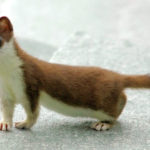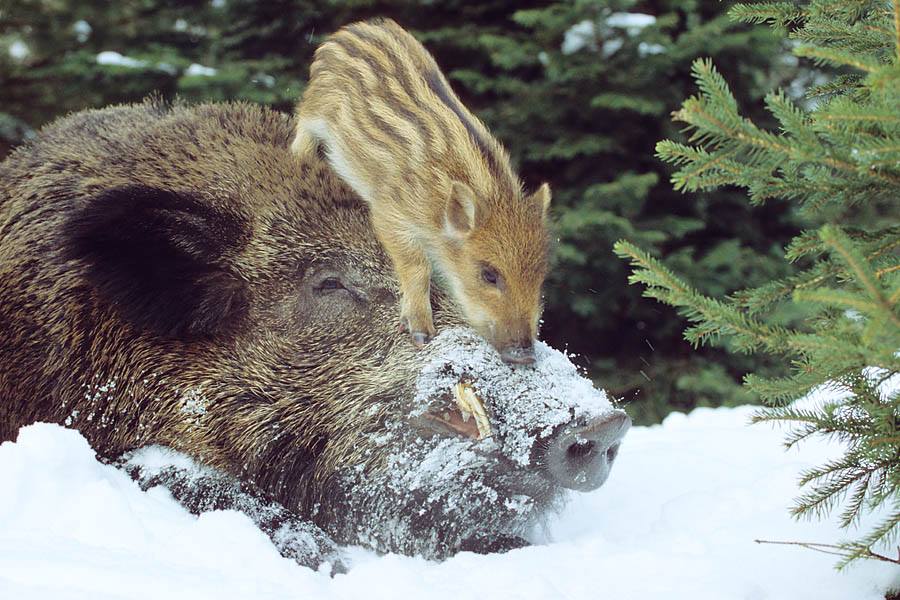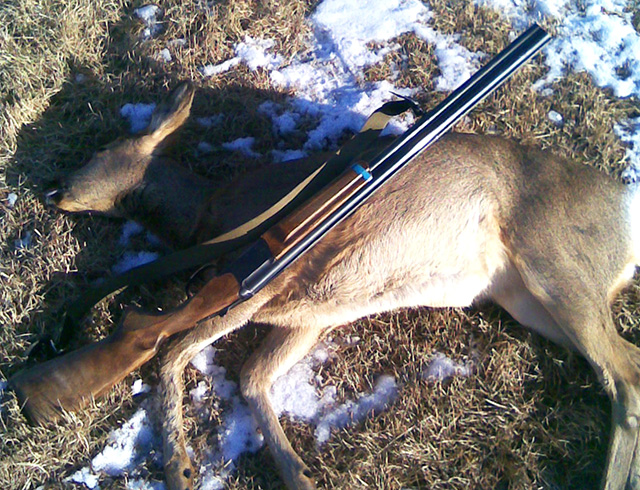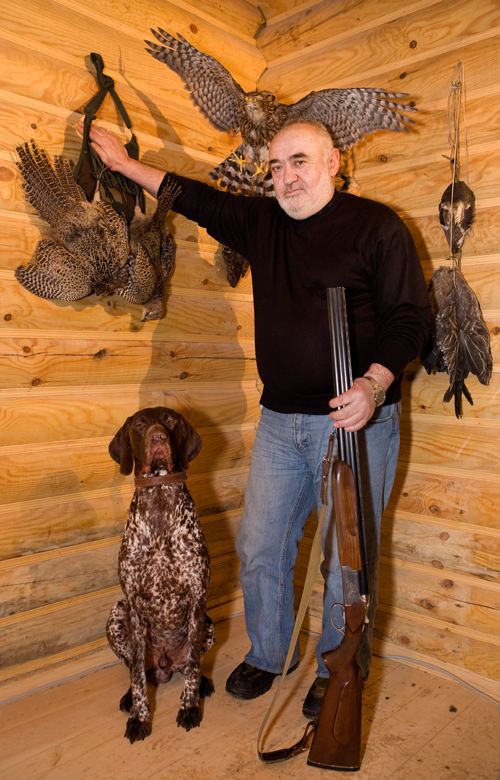Weasel and Ferret
 Ermine is a night predatory animal. It is valuable not only for its skin, but also because it destroys a huge number of mouse-like rodents and water rats.
Ermine is a night predatory animal. It is valuable not only for its skin, but also because it destroys a huge number of mouse-like rodents and water rats.
An ermine is common throughout almost the entire territory of the Soviet Union, but it is mostly mined in Yakutia and Western Siberia. There is no this animal only in the Caucasus and Transcaucasia, in the Crimea and Central Asia. It inhabits a variety of lands, mainly floodplains of rivers, lakes and marshes, overgrown with reeds or grass.
With the onset of winter, each of the animals occupies a certain area (individual range), the value of which depends on the feeding of land. In the poor years with mice, the plot is longer and the ermine passes it in 4-5 days, in the feeding years, it takes 1 to 2 days to go around its animal, although its daily variation at this time is two to three times shorter.
The ermine is very mobile and curious. During the night, he manages to examine all the irregularities of the terrain, ditches, streams and rivers; he climbs into all his and other people’s burrows, hollows, crevices of rocks and stones, looking for food and shelter there. In severe cold and snow storms, ermine activity is greatly reduced; sometimes he sits in a hole for weeks without giving a trace.
The ermine fishery begins in October — November, when its skin reaches ripeness. The fishing usually ends by March 1. We make ermine in a variety of ways. The most common trap animal capture.
On the ermine used traps number 0 and number 1, rarely number 2 with one spring (the second is removed). Put them with or without bait. In the latter case, Samovov are installed at holes, cracks, hollows, on the paths and in other places visited by the animal. The ermine is most successfully caught on ravines, ditches and on plow furrows, in natural artificial holes, for which, out of curiosity and aspiration to settle in someone else’s burrows, he will not fail to look.
In Western Siberia, many hunters set traps only on reliable climbing and paths, yet the rest of the trails are blocked or destroyed. With this installation, there are fewer trawls required, but then ermine traps are becoming more frequent.
The traps are masked by local material: in the fall – with grass and leaves, in the winter – with a thin film of snow or with a piece of paper dusted with snow on top. It is good to mask the trap with the feathers of birds: frozen with or glued to the trap with the blood of birds, they serve as a kind of bait of the animal.
The ermine is hunted in the burrow. The bait is a mouse, a piece of hare, poultry or fish. The bait is put into the burrow for a trap, and the animal, attracted by the burrow and having sensed the bait in it, in an attempt to reach the tidbit, will inevitably step on the plate.
Very effective catching ermine scourge. This method has so far been known only to some hunters of the Tyumen region.
The preparation of the lashes usually takes place in the fall, along the way with the fishing of the water rat or mole.
They are satisfied on overgrown with bushes and grass on the outskirts of marshes, ditches, streams and rivulets. Plait placed at a distance of 300 – 500 meters
one from the other, at least 15-25 pieces per hunter.
The scourge resembles a basket with overturned “upside down” with 1-2 inlets. From above, she covers herself with a scutum or boughs. The diameter of the lash below is 60–70, above it is 40–50 and the height is 60–30 centimeters. The inlet (slit) is made in the full height of the whip, 5-8 centimeters wide.
Traps for ermine and ferret
With the onset of frosts, a bait is put in the lashes – guts, heads and other scum of fish, wild birds, muskrats, voles, rotten eggs, etc.
From the beginning of the trade, the whips visited by the animals set traps — one outside, and the other inside. With a small number of ermine bastard serves simultaneously as a feeding platform
Trapped ermine yields a rather high percentage of defective skins, traps No. 0 and No. 1 yield 31.6 percent of skins with a small defect, 17.2 with an average, 5.8 with large defects, and only 46.4 percent with defect-free skins. .
Currently being tested lightweight traps number 00 and “sharch”. These traps weigh only 80 grams, have straight arcs and a rectangular plate. The force of the springs – 8-10 kilograms. These traps are almost as good as traps No. 0 and No. 1, but they almost do not spoil the ermine’s skin, grabbing the animal only by the hand of the paw.
But it is very difficult to establish a trap on a tree in front of a hollow, in a mink on a steep bank of a river or in front of a cleft on stones. In such places it is better to put a bow. Installing it is possible everywhere, besides it spoils the animal’s skin less and can be made by the hunter himself. Used in the old pastures, ku-lemki, proskok, dies, ice-boats, gags, fork with a hair loop, silinka, stool, arms and npvrHe are now almost not used.
Meanwhile, an ordinary loop woven from 10–12 white horsehair deserves attention. This trap is extremely simple, easy to handle and very mined.
So, F. I. Volosnikov from the Makushinsky District, Kurgan Region, places 300 loops, extracting up to 150-170 ermines for them in a season.



